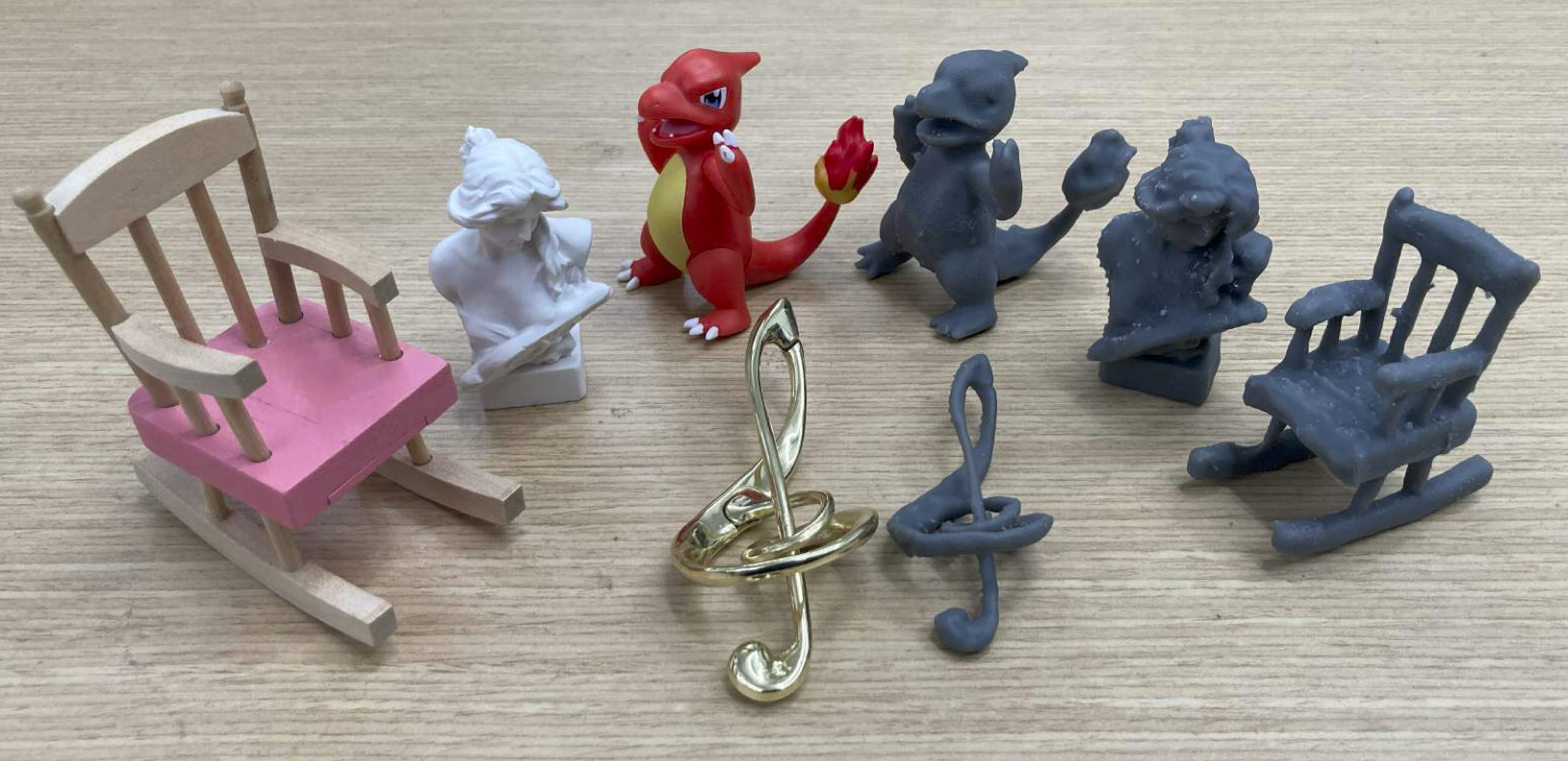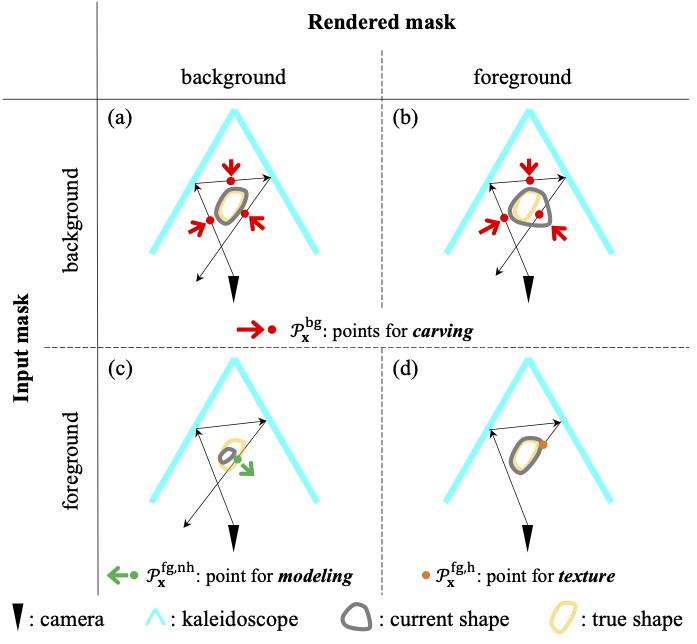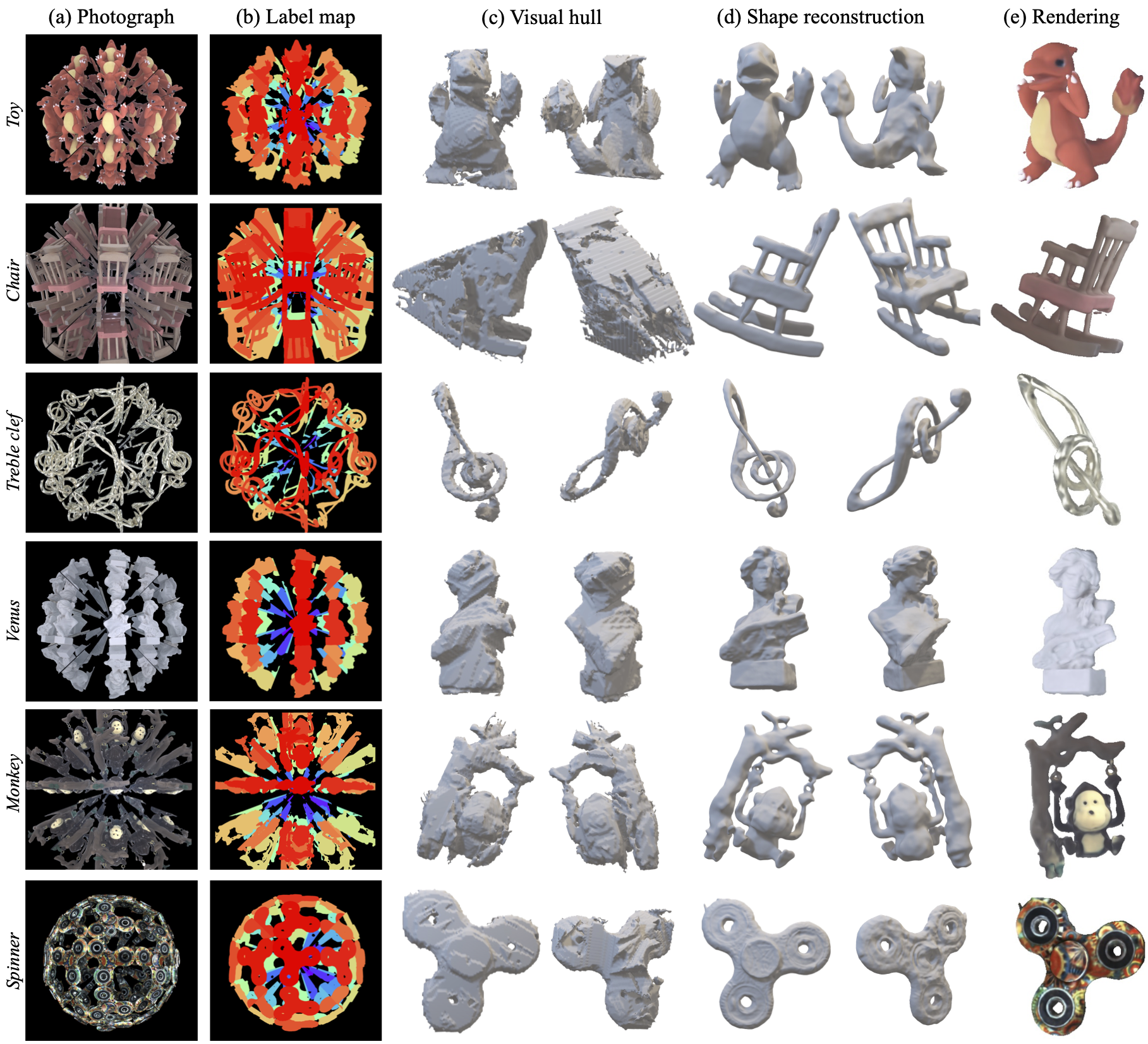We propose a technique for full-surround 3D reconstruction with a single kaleidoscopic image. Our key insight is that a single pixel in a kaleidoscopic image is equivalent to multiple such pixels in its multi-camera counterpart. Armed with these insights on the nature of information encoded in a kaleidoscopic image, we propose a technique that we call kaleidoscopic space sculpting; sculpting sets up an optimization problem that updates a neural implicit surface using a collection of cost functions that encode background information (to remove regions) and foreground regions (to add regions), as well as the texture of the object. Interestingly, our technique does not explicitly calculate the label information. Despite this, it provides robust single-shot full-surround 3D reconstructions. For dynamic objects, we apply our technique separately on each frame of a kaleidoscopic video, to obtain full-surround 3D videos. Figure shows a gallery of objects placed beside their 3D printed counterparts, obtained using neural kaleidoscopic space sculpting.


3D printing of shape reconstructions




